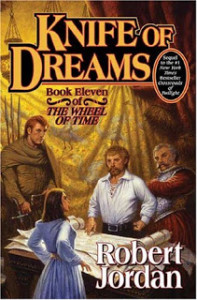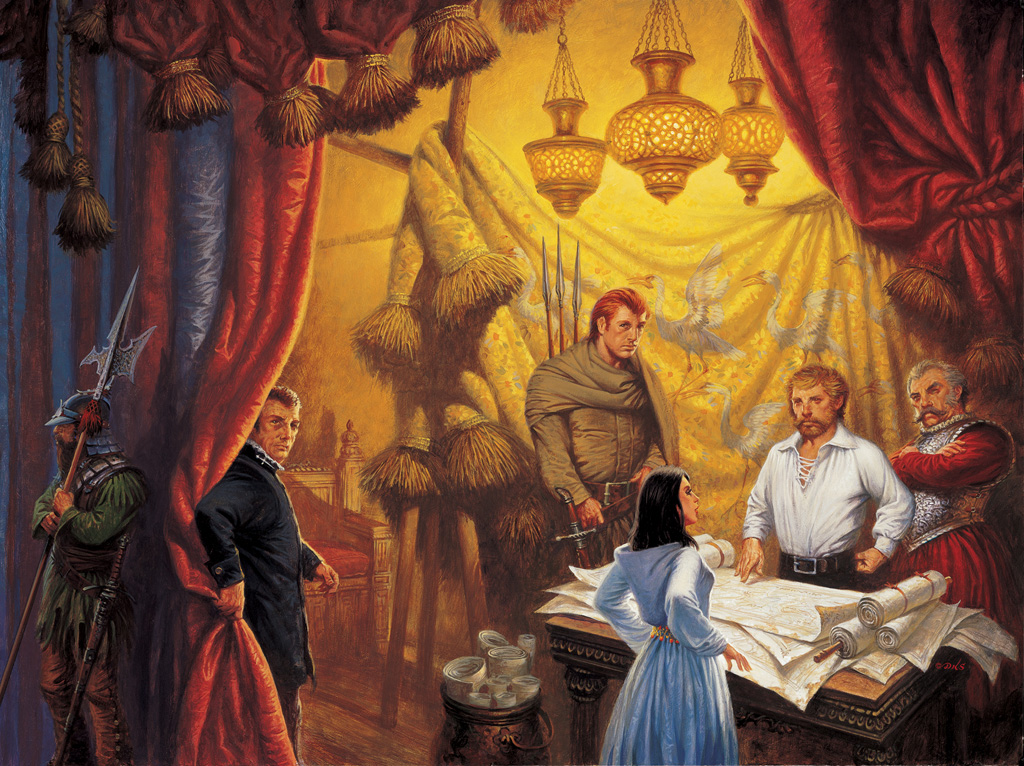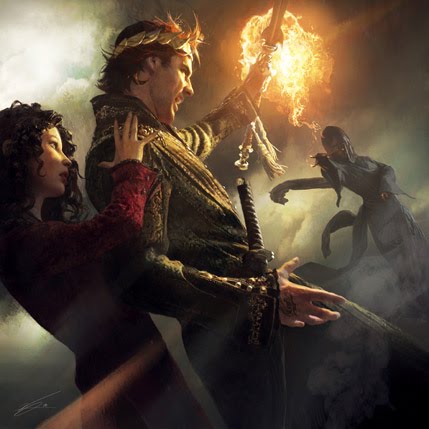
From what I’ve gathered, Knife of Dreams was lauded back in 2005-2006 as a sort of “return to form” for Jordan. The MMPB page count reached 860, so perhaps if “return to form” means writing a bunch of pages, then this book achieved that goal admirably. If “return to form” also means that the author continues to repeat too many descriptive details of his characters and having an over-reliance on “national” stereotypes to substitute for uniform substantive character development, then maybe Knife of Dreams accomplished this as well.
[A] slightly greater sense of urgency, whenever the characters did not stop to sip their peppermint-flavored tea.
But on the whole, this was a better reading experience than the previous two novels. There were some long-awaited (and long-delayed) subplot resolutions that take place here. There was a slightly greater sense of urgency, whenever the characters did not stop to sip their peppermint-flavored tea served on a silver service. And there was one romantic relationship that managed to outdo Stephanie Meyers’ travesties. In a world (again, plug in that late, great movie trailer guy’s voice) where virtually all relationships feel light as a feather and stiff as a board (those readers in their mid-30s to mid-40s might get that reference), the interplay between the mischievous Mat and his bride-to-be, the Seanchan Daughter of the Nine Moons, Tuon, is actually well done. When it seems some characters *cough*Rand*cough* fall in love (or have someone fall in love with him) at the drop of the hat, this budding romance was not as offensive to read, although there were a few times where it felt as though the relationship was taking place more due to “prophecy” influences than anything “natural.”

Mat/Tuon […] are pretty much the sole highlights on this novel.
However, the Mat/Tuon scenes are pretty much the sole highlights on this novel. Although he wasn’t off-screen as much as in the previous volume, Crossroads of Twilight, Rand appears in a handful (pun?) of chapters and outside of one confrontation with a Forsaken in disguise, his chapters pretty much only detail that he’s “hard” and wants to get “harder.” If only character Viagra were available to him, then perhaps he would have accomplished this. Very little character development here outside of the above-mentioned “hand” issue and the “hardness.”
 Egwene’s time as a captive in the White Tower was slightly interesting, but it felt a bit too abbreviated and rushed in places (a strange thing to say about this series, where a paragraph substitutes for a well-worded phrase or sentence). It is obvious that her travails are meant to show a marked difference between her ability to “embrace” pain and the unwillingness of the Tower Aes Sedai to confront their fears. It’s just that the way her chapters were interspersed among other subplots led to this sense of there being a solid, cohesive development (this is rectified in the most recent book, I should note).
Egwene’s time as a captive in the White Tower was slightly interesting, but it felt a bit too abbreviated and rushed in places (a strange thing to say about this series, where a paragraph substitutes for a well-worded phrase or sentence). It is obvious that her travails are meant to show a marked difference between her ability to “embrace” pain and the unwillingness of the Tower Aes Sedai to confront their fears. It’s just that the way her chapters were interspersed among other subplots led to this sense of there being a solid, cohesive development (this is rectified in the most recent book, I should note).
The murder-mystery plot was rather clumsy to read and its resolution was so melodramatic that I think I heard Wilkie Collins yelling that he wants his moonstone back. The problem with trying to have a political intrigue subplot is that if the intrigue is not there, the political aspect (especially if it’s for an imagined “country” like Andor) is going to fall flat and that is what I think has happened with Elayne’s chapters the past three novels. Just not much interest in reading about these maneuverings, even if I suspect this was more to give her something to do until the big Last Battle breaks out in the storyline near future.
Knife of Dreams is at best a tolerable novel and at worst, a melodramatic volume that makes readers roll their eyes at certain events.
So while there is a slight uptick in plot “movement, on the whole Knife of Dreams is at best a tolerable novel and at worst, a melodramatic volume that makes readers roll their eyes at certain events. While I enjoyed it somewhat more than the previous few volumes, this is far from a “good” novel. The majority of the subplots failed to engage me as a reader, the prose continues to be pedestrian to clunky, and the characterizations still are more 2D than dynamic in character. Although I can understand why many fans of the series enjoy this volume, for myself it was just another description-heavy lull in a plot storm that may end up failing to make this series a worthwhile (re)read.


funny how these books are so popular but online people down them so much.
This will always be one of my favorite books. Not to be an ass, i just felt like i should stick up for it.
Well, I suppose if you want to go that route, it could be noted that One Direction seems to be very popular yet online (and elsewhere) quite a few people down them quite a bit as well. ;)
Seriously, though, I’m not knocking those who liked this book. There were some elements that I liked, some that I didn’t (OK, more that I didn’t). My reprinted commentaries here are meant to show how someone who began reading the WoT series back in November 1997 has seen his personal tastes change in relation to the fictions themselves. If there are more critical remarks than positive praises, then that is one side of the matter. All we can be is honest with ourselves, even if the matter is in contention. The WoT series is uneven in many regards and downright wretched in some, but there were enough interesting features for me to read the entire series to its conclusion and to review all 15 volumes (including the New Spring prequel). Should be interesting to see how some react to my 2009 review of TGS, which if I were revising it now, would probably be a more mixed review due to the structural problems of the final two novels.